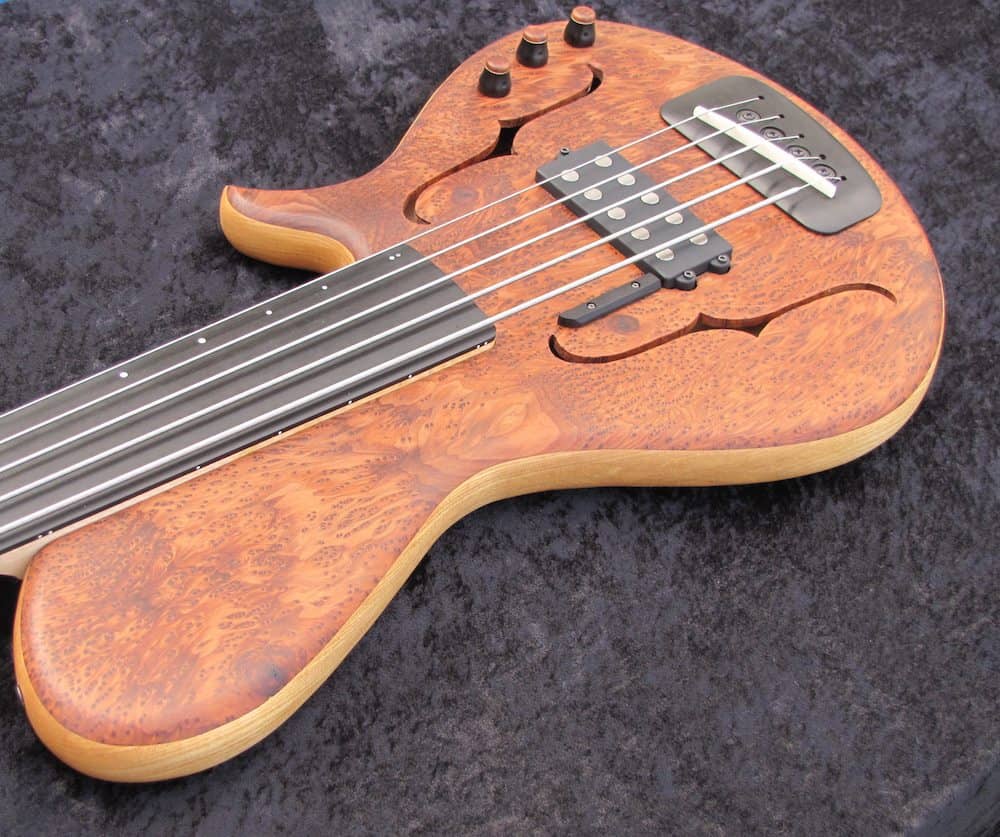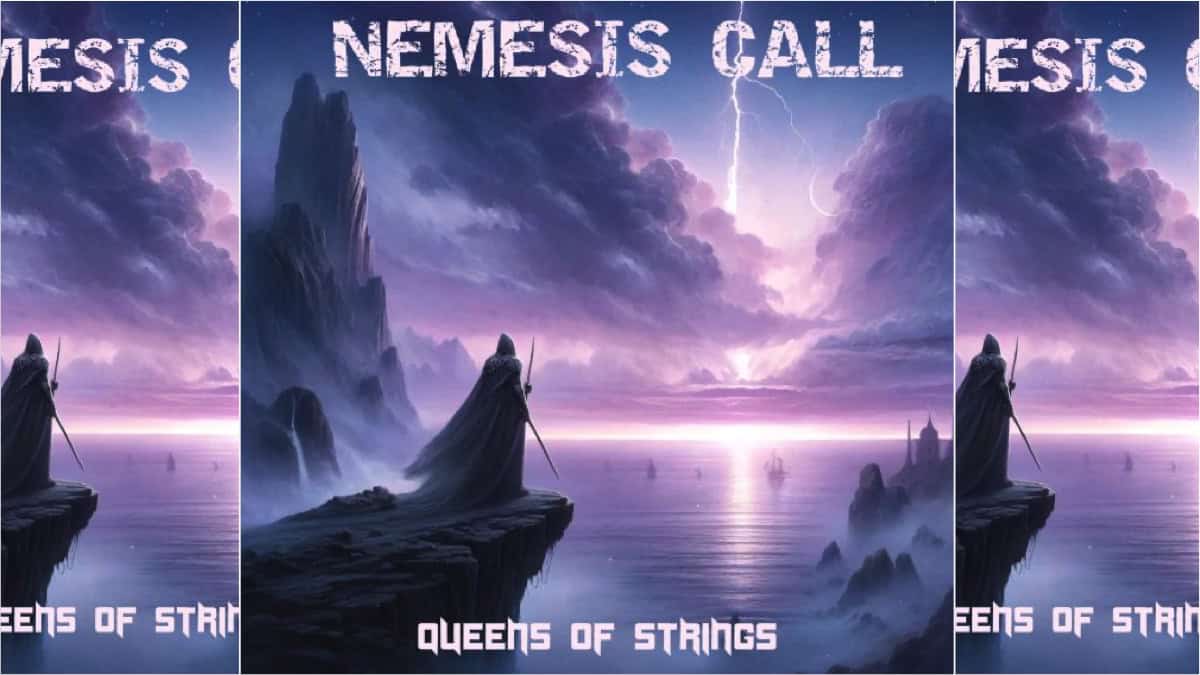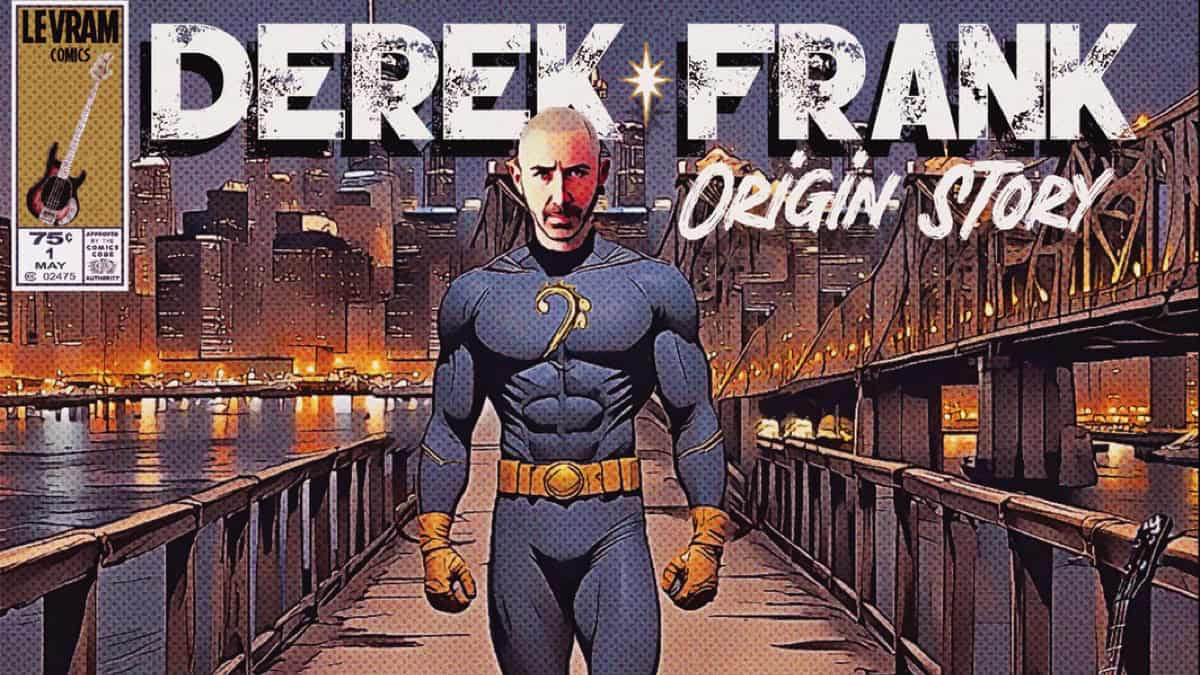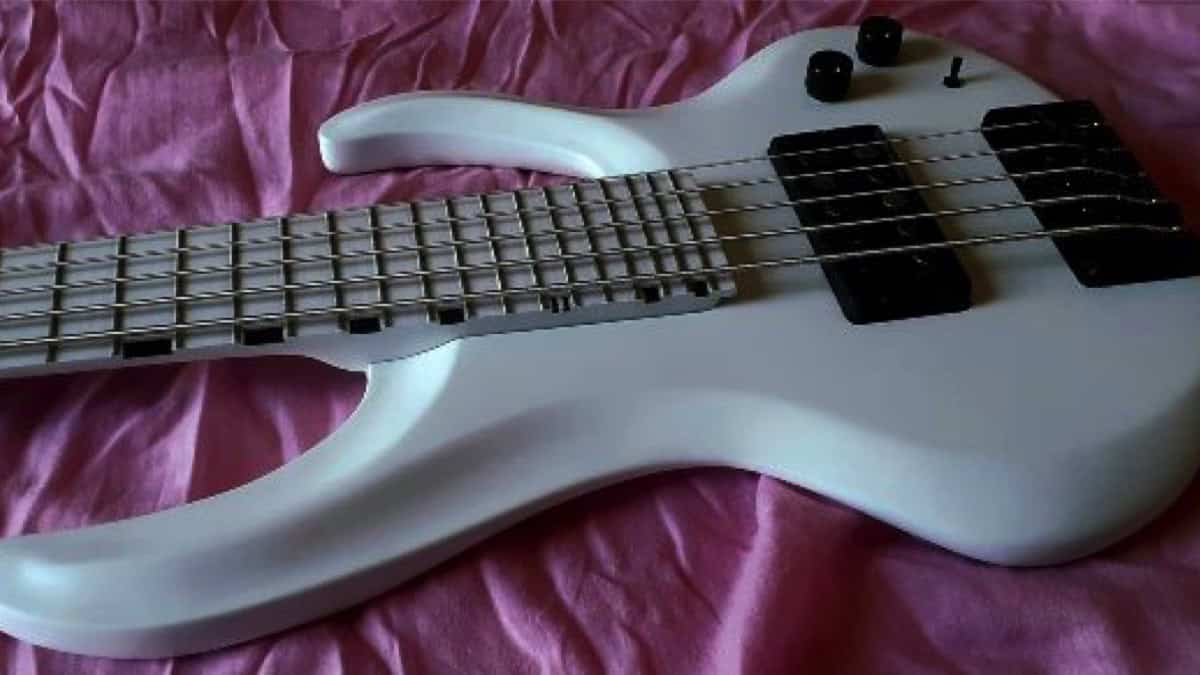Latest
Bass Musician Magazine’s Year of the Luthier – Cleve Johnson

Interview with Luthier Cleve Johnson, LedBelli Bass Guitars –
How did you get your start in music?
I began playing music in grade school with the band! As a teenager in high school, I picked up the guitar. Later on, in my 30’s, I imagined myself becoming a successful fingerstyle acoustic guitarist along the lines of Don Ross or Chris Proctor. Then one day about 15 years ago a friend of mine was short-handed for a gig and needed a bass player. He asked me if I could fill in and I thought, “Sure, why not?” So, the first time I ever played bass was live in in front of an audience! And just like that, I was hooked. Quite by accident I discovered that I had a rhythmic sense that suited bass guitar, and I was hooked on bass from that day forward!
Are you still an active player?
Yes, I have a blues/blues rock band called BlackWater. It’s a power trio with a female vocalist up front, and we gig when we can! And yah, I play one of my own!
How did you get started as a Luthier? When did you build your first bass?
I built my first bass in 2008. At that time I owned a German made Humanbase – it was a 6-string fretless, neck-thru design. For many months I’d had my eye on a Ritter bass that I wanted to buy, but I could not afford it. I had a woodshop and for most of my adult life I had built many furniture projects. Since I had owned a number of very high-quality acoustic guitars during my life, I knew instinctively what a good stringed instrument should have – I knew what needed to be there. In the springtime of 2008 I had a knee surgery that kept me off work for 3 or 4 months, so I decided that I would spend my time off from work building a bass guitar!

When I started that first bass I never intended to build more than one bass. I never started building that bass with the intention of becoming a “Luthier”. The first bass was a neck-thru bass, and I knew there was no margin for error – I knew that if I made one mistake, the whole thing would be ruined. I actually never expected to finish it, thinking that somewhere along the way I would blow it. But things turned out, and the result went way beyond my own, or anyone else’s expectations. Pretty soon, somebody said, “You should build another one of these.”
So, in 2009 I attempted 3 more basses, two of which I felt were sub-standard and I destroyed them (I was trying new things). The remaining bass from ’09 is still being played today – on permanent loan to a young jazz bassist in Seattle named Juan Hernandez. That bass is a semi-hollow body, single-cutaway fretless bass that I still offer to clients today – the Jonah HSC model.
Then in 2010 I met Mick Vaughn, the bassist for Tim Reynolds & TR3. (Tim is the lead guitarist for The Dave Matthews Band who also has his own band that tours when he is free from DMB.) Mick played my very first bass for a sound check and he liked it well enough that, to my surprise, he wanted one of his own! So, in the spring of 2010 I began work from scratch on a brand-new design. Mick wanted his bass in time for the Mile High Music Festival in Denver CO in August of 2010. I literally finished the bass two days before we had to leave for Denver! I’m still blown away that the first time that bass was played was at a major music festival in front of 9,000 people, being only my 5th build! This new design for Mick became what today is known as my “Noah” model.
So, within a few weeks after the festival, I had a half-dozen “orders” that I never expected. I suddenly found myself in the role of a bass Luthier, and I was in over my head – I was freaking out!

How did you come up with the name, “LedBelli”?
I get asked that a lot! It started out as a sarcastic joke between friends! In 2009 a buddy came over to the shop to see what I was up to, and he began to pester me, “What are you gonna call them?! You gotta have a name!”, and I kept blowing it off. But he wouldn’t let it die! At the time I was listening to a lot of Lead Belly blues in the shop, and so just on impulse to get my friend to shut up I said, “I don’t know, I’ll just call them Lead Belly Basses or something!” He promised me that he was going to hold me to that and sure enough, the following year when things broke loose he was right there holding my feet to the fire! What are friends for?! Lol. So, I changed the spelling around and went with it! Later on, I considered changing the name to something more serious, but it was too late – LedBelli had already established an identity! Now, I’m kind of glad it went the way it did!
How did you learn the art of woodworking/Luthier? Who would you consider a Mentor?
I learned woodworking in high school shop class, and those skills never left me. I built furniture off and on all of my adult life. But as a bass Luthier, I am almost completely self-taught – again, I knew from being a musician what needed to be there and then devised my own methods of getting there!
I can add that here where I live there is an accomplished acoustic guitar Luthier, Duane Noble, who taught me the basics of finishing with nitro-cellulous lacquer and some basics about fingerboard radiusing and fret-work. But even he will admit that he was not of much help beyond those initial basics! I pretty much winged it from there!
Since my finishes have become something of a hallmark for my work, Duane was very helpful in that area. However, the way I achieve my finishes today is completely different from how Duane taught me to do it in 2008! Otherwise, everything else I have learned by trial, and a lot of error!
I’m very observant – I never pick up an instrument without looking closely to see how they did what they did, and then I try to think of how I would do it. It’s a systemic learning process that never ends.

How do you select the woods you choose to build with?
From the beginning I’ve kept my wood choices well within the boundaries of what’s traditionally acceptable. What I do differently is that I look for the most amazing woods I can find within those boundaries. I want wood that makes people say, “Wow”!
I’m pretty picky about the wood I use. I have a handful of Northwest suppliers I frequent and I am always looking for the most exotic figured domestic hardwood I can find. I focus on Ash, Maple, Alder, and Walnut for the bodies, while my necks are made mostly from Maple and lately, Wenge. My fingerboard choices are Ebony, Rosewood, Maple, Ziricote, and Cocobolo.
How about pickups? What pickups did you use in the past? What electronics do you use right now?
In the beginning I used Delano Pickups and preamps almost exclusively, unless a client wanted something else. Contrary to what many of my critics think, my earliest work was modeled around the Humanbase that I owned. My Humanbase had Delano electronics onboard and I liked it, so I went with that. Delano and I eventually developed a great relationship, and I would still recommend them to anyone who seeks top-notch quality and a modern-esque tone.
However, in 2011 I learned of Carey Nordstrand’s work, and I contacted his company about making me a custom wound set of MM- humbucker’s for “The Rainbow Bass” (pictured) that made its debut at The Gorge Amphitheater during the Dave Matthews Band “Caravan” Concert in 2011. From day 1, Nordstrand gave me the kind of attention normally reserved for dignitaries, and that marked the beginning of what has now become a very fruitful relationship! I can honestly say that I have become good friends with Carey and several of his employees as they have taken me under their wing and produced for me everything that I’ve ever asked of them! Nordstand does not care how small I am . . . they treat me like I’m the only builder alive! So, since 2013 I have used Nordstrand Pickups and Electronics exclusively. The only time I don’t use Nordstrand is when a client specifically asks for something else! Most clients don’t!
Who were some of the first well-known musicians who started playing your basses?
Mick Vaughn, of Tim Reynolds & TR3, although Mick would dispute the “well known” label. Mick is a musician’s musician, and he is known and loved inside the industry! He’s also one of the most genuine people you will ever meet, and I think he would be a great bassist to feature in Bass Musician Magazine!

How do you develop a custom bass for a client?
I listen -closely- to them. With some clients, I’ve spent hours on the phone hammering out the details of what they want! Other clients may simply say, “Make it like that one!” Regardless, I try to listen to what my client is trying to say, and then I work to meet that expectation.
But in all cases, I try to keep what my client is looking for within the boundaries of what I offer. I have 6 different design motifs that I stick to and they are proven. Within the framework of one of those motifs the client and I work together to make it happen!
What are a few things that you are proud of about your instruments or that you would consider unique about your instruments?
Well, that’s a hard question for me to answer!
I guess that the over-riding thing that comes to mind is that my work is completely hand-crafted using only hand tools and basic shop equipment. My shop is very small! I do not use any CNC or CAD in my work. There is no automation. When I work, I sweat . . . sometimes, a lot! I don’t criticize those who use CNC or automation, and I understand their production advantages, but it’s just not what I’m about. I guess you could say that I’m kicking it “old-school”.
My over-riding desire is that I want the instrument that I deliver to a client to be as pure an expression of my art as I can give to a new owner. I take a lot of pride in being able to handcraft an instrument that makes people go, “WOW!” when they open the case. I don’t see my work ever being mass-produced – frankly, I don’t think it can be. I have never built any two instruments exactly alike, and I sincerely doubt that I ever will.
Which one of the basses that you build is your favorite one?
That’s like asking me which of my children is my favorite! I don’t have a favorite one, but there are a few that stand out – the very first Noah that Mick Vaughn owns is special, if only because it was the bass that sent me down this road that I’m on. The Rainbow Bass (a Noah model) was a game-changer for where I was at in 2011. In 2015 I introduced a new model, the Blackbird, that was an instant hit and that I plan on doing a lot more of. Also, my Jonah SSC model is pretty radical with its ultra-thin body.
I can’t pick just one!


Can you give us a word of advice to young Luthiers who are just starting out?
Definitely. Remember two things:
First, stay away from uninformed (or under-informed) critics of what you are trying to achieve in your work. Stay true to your own vision for where you want to be. If you are paying close attention, this craft is self-correcting. If you make a mis-step, you will soon know it. Follow your muse . . .
I have a saying: “Those who can, do. Those who can’t – criticize those who are doing it.” The majority of the people who will criticize you have utterly no idea what they are talking about. Ignore them. My art has flourished since I stopped worrying about the opinions of the uninformed.
Secondly, find one or two people who can give you the moral support and wisdom that you need to excel. They don’t necessarily have to be Luthiers. They just need to be people who are further down the road of achievement than you are! Find one or two successful people who are able to cheer you up and give you wisdom when you’re having a bad day! For me, Carey Nordstrand, Tom Bowlus, and a Seattle area artist and good friend, Aaron McCrae, have provided that support exactly when I needed it. On two or three occasions, I was ready to quit this gig! Each of them gave me the perspective that I needed to keep going!

What advice would you give a young musician trying to find his perfect bass?
I would tell a young musician this: find the best bass you can get for $500.00 or less, take it to a professional who can set it up well, and then learn to play it and THEN learn to play it some more! Focus on becoming the best musician you can be! As you become a better musician, you will slowly realize what you want in YOUR instrument. But don’t go chasing the ultimate bass guitar thinking that it will suddenly make you proficient in areas where you’re not. A bad musician with a $10,000.00 bass guitar is still a bad musician! There is only one way to get better: hard work and practice. (That’s also true in becoming a Luthier!)
What is your biggest success for you and for your company?
This spring I had a very expensive bass come through my shop from a well-known builder whom I’ve admired for a very long time. Anyone who is a bassist would immediately recognize the name. For the first time, I was able to directly compare my work to his work. In that comparison, I suddenly had a revelation: somehow I had unexpectedly crawled my way onto the same playing field of artisanship, tone, and playability as his work. I never saw this coming . . .
That moment of realization changed everything. Up until then I kind of had a Luthier’s inferiority, or underdog, complex. I always figured that my work was, at best, journeyman level. But on that day I realized that I’m making something special. Realizing this has changed everything about how I now approach my work.

Are you preparing something new, some new model or new design?
Yes, this summer I am introducing a new model, the Majestic, that will be my “flagship” model. It is a 27 fret neck-thru design with a Wenge neck and Ebony fingerboard. Going forward, those will be the defining features of the Majestic, while I will vary the body top and wings. It’s going to be killer, and a lot of folks are already lining up for it! I’m excited to see how it turns out!
What are your future plans?
Plans?! I never planned on being here to start with! But I love what I’ve stumbled on to here, and I plan to keep working hard to make my instruments something desirable for any musician to own. I plan to do whatever I need to do that makes owning a LedBelli Bass Guitar something special. If my clients fall in love with their new bass, then I’m the happiest of all.
Is there anything else you would like to share that we have not included?
I love my dog!
Visit online at:
Gear News
New Gear: Spector Doug Wimbish USA Custom Series Basses

Spector offers Doug Wimbish USA Custom Series basses…
Spector, a leading authority in bass guitar design, unveils two new Doug Wimbish USA Custom Series basses. Synonymous with bass excellence since 1987, Wimbish collaborated with Spector’s USA Custom Shop to create the DW-4 and DW-5 models, echoing the iconic instruments that have been favored heavily throughout his recording and performing career.
These signature basses faithfully replicate Wimbish’s originals, down to the smallest details like neck contours and nut widths. Customized EMG pickups, developed in collaboration with Wimbish, capture the distinctive sound that has shaped his monumental musical impact. These models invite players to explore the feel and response that have defined Wimbish’s signature style over the years.
Available in 4-string and 5-string versions, each model boasts unique features & finish options. The DW-4 comes in Amber Stain Gloss and Black Stain Gloss options, while the DW-5 offers Dark Blue Stain Gloss and Faded Natural Gloss. Every purchase includes a certificate of authenticity signed by Doug Wimbish. Wimbish comments, “Spector took the time to get every little nuance right, and that to me is dedication and being thoughtful enough to know ‘I want to nail it,’ and they did. I’m able to pick these instruments up for the first time and play them like I’ve already had them for years.”
For more information, visit spectorbass.com/doug-wimbish-usa-signature-series/.
Photo: Doug Wimbish, pictured with the new Spector Doug Wimbish USA Custom Series basses
Bass CDs
New Campaign: Alberto Rigoni, Nemesis Call – Queens Of Strings

Italian bass master and composer ALBERTO RIGONI is thrilled to announce his brand new project “Nemesis Call – Queens Of Strings”.
Nemesis Call – Queens Of Strings features a super talented drummer from Japan (TBA) and tons of female guitarists such as SAKI, Giusy Busetto, Alexandra Zerner (TBC) and many many others (TBA). Furthermore, Alberto has also launched a Fundraising Campaign for the project. 20% of the income will be donated to Lega del Filo d’Oro legadelfilodoro.it/it, an Italian association that helps deaf and blind children!
Alberto shares:
“Hello friends and music lovers! I’m Alberto Rigoni, an Italian composer and.. a BASS GUY! Between 2008 and 2024 I released 13 solo albums, spanning from progressive, rock, ambient to funky and experimental music, which also features contributions from musicians such as keyboard wizard Jordan Rudess (Dream Theater) drummer Gavin Harrison (Porcupine Tree) and Marco Minnemann (the Aristocrats), keyboardist Kevin Moore (ex Dream Theater), singer John Jeff Soto (ex Goran Edman (ex Y. Malmsteen), bassists Nathan East, Stu Hamm (Joe Satriani), Nik West (ex Prince) and many others. I’m also bass player for BAD As, Sunset Groove Society, Kim Bingham, The Italians bands and co-producer of Mistheria’s Vivaldi Metal Project.”
Alberto on the new project Nemesis Call:
“Even if my latest album “Unexpected Lullabies”, dedicated to my newborn Vittoria Parini Rigoni, will be released on June 4th, 2024, when Vittoria came to life I felt the need to compose new music (yes, I really can’t stop!!!!!). This time will be quite challenging because I’m willing to release an instrumental ambient/prog/rock/metal album, that will feature a talented and young drummer (TBA) and tons of female guitarists (that’s why I will call the album “Queens of the Strings”) such as Alexandra Zerner, YOKA and many others (TBA/TBC)). It won’t be easy to manage all such great musicians but I will make it!! Are you ready to face a new prog experience? The album will be released in Digipack CD and in high-quality digital format approximately at the beginning of 2025.”
The Fundraising Campaign:
As an independent artist, Alberto is looking for supporters who can help him reach the budget for the production (recordings, mix, mastering, artwork etc.) of this new album and has started this fundraising campaign that will end successfully on October 15th, 2024.
Get further information about Alberto Rigoni’s new project Nemesis Call Fundraising campaign at albertorigoni.net/nemesiscal
Bass Videos
Artist Update With Bassist Derek Frank

Bassist Derek Frank…
Many of you will remember the last time I chatted with Derek Frank was back in 2017. The main thing that impressed me was how busy Derek was and how he juggled playing with many huge acts.
Now, I am happy to hear that Derek launched a new album last March titled “Origin Story” where he digs deep into his roots and pays homage to Pittsburg.
Join me as we get caught up after all these years and hear the details about the new album, how Derek gets his sound, and his plans for the future.
Photo, Stephen Bradley
Featured Videos:
Visit Online:
www.derekfrank.com
www.instagram.com/derekfrankbass
www.youtube.com/derekfrankbass
www.facebook.com/derekfrankbass
Latest
This Week’s Top 10 Basses on Instagram

Check out our top 10 favorite basses on Instagram this week…
Click to follow Bass Musician on Instagram @bassmusicianmag
FEATURED @foderaguitars @bqwbassguitar @lecomptebass @xvector_basses @vuorensaku_guitars @phdbassguitars @meridian_guitars @sterlingbymusicman @ramabass.ok @overwaterbasses
Gear News
New Gear: Alberto Rigoni Signature Bass, the VPR5 by Gaetano Costanzo!

Alberto Rigoni Signature Bass, the VPR5 by Gaetano Costanzo!
Internationally renowned bassist ALBERTO RIGONI (soloist, BAD AS, Vivaldi Metal Project, TwinSpirits, etc.) is proud to announce the release of his signature bass VPR5 made by renowned Italian luthier Gaetano Costanzo!
The bass is entirely handmade in Italy, without the use of CNC or other machinery, and has rather special features. The VPR is a 5-string bass (but also available as a 4-string) with 30 frets, Seymour Duncan pickups, Music Man Alnico style, passive electronics (volume, tone and a switch to select series/parallel/single-coil mode), alder body, and American maple neck and fingerboard. Gotoh tuners that ensure perfect intonation. The bass is totally painted white (nitro finish) but other colors can be requested. The VPR has a weight of about 2.9 kg and suitable for any genre.
For more information contact Gaetanobass77@gmail.com or visit online at www.instagram.com/gaetanocostanzoluthier or www.facebook.com/GaetanoCostanzoLuthier















